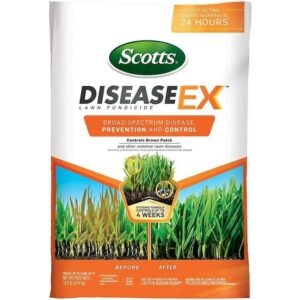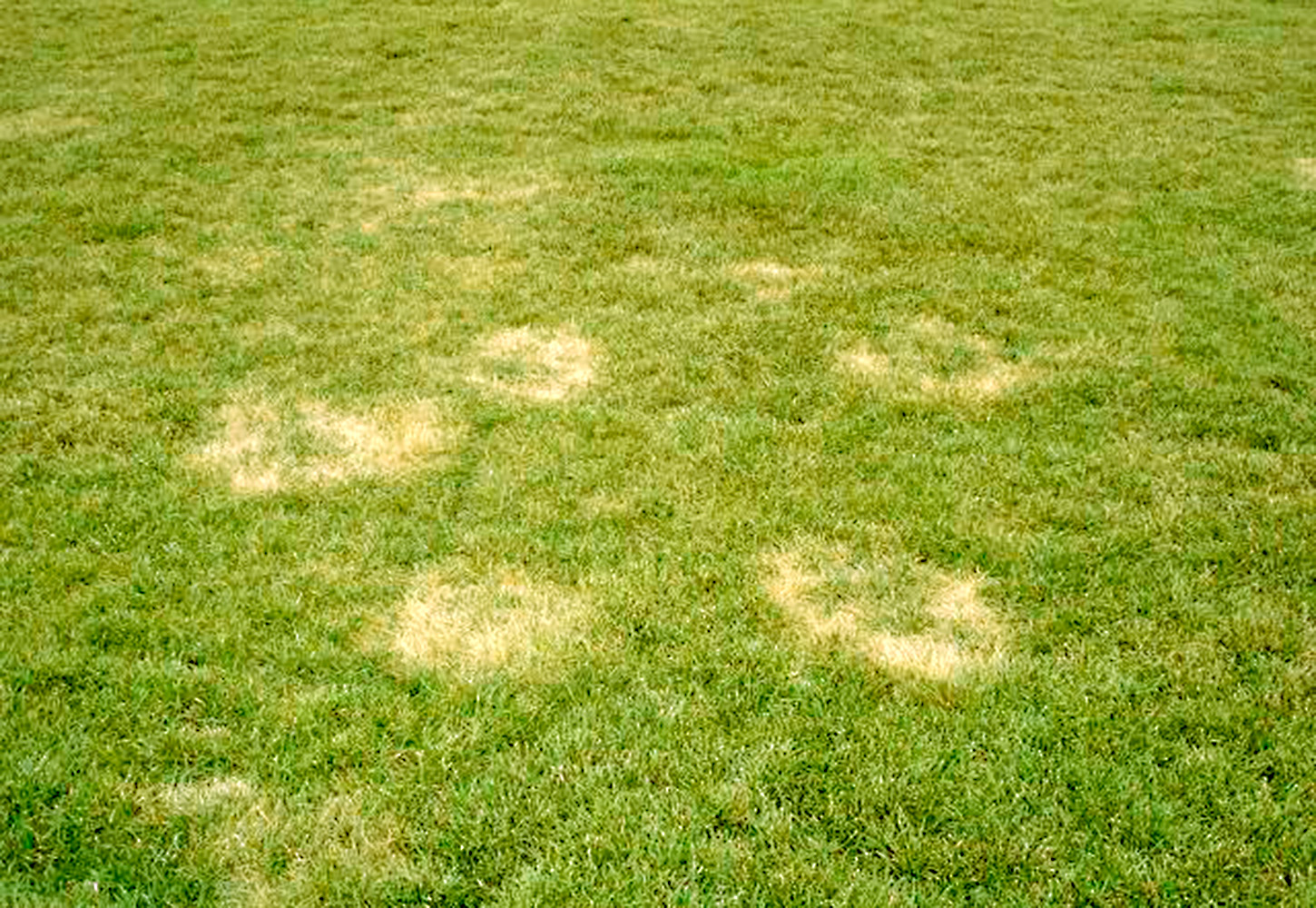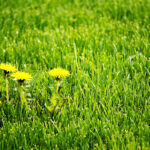
Varities: Bluegrass, Creeping Bentgrass, Fine Fescue and Kentucky Bluegrass.
Summer Patch appears in circular patches or rings, ranging from 6 inches to 3 feet in diameter.
Grass within these patches is initially off-colored, prone to wilt, growing poorly. Within one or two weeks, the lawn will continue to decline, turning yellow or straw brown and eventually collapsing.
The outer edges of the patch are usually orange or bronze when the disease is actively developing. Affected plants are easily pulled up and visual examination reveals that the roots, crowns, and rhizomes are black and rotten. The patches recur in the same spot annually and expand 2 to 4 inches per year.
The fungus begins to attack the roots, stolons, and rhizomes in the spring when soil temperatures warm, but symptoms are often not seen until considerable damage has been done to the root system in midsummer. Heat, drought stress and nutrient deficiencies are the main factors that encourage Summer Patch. Factors that reduce the growth of grass roots, such as improper feeding, excessive thatch, poor drainage and overwater can cause the turf to be more susceptible to the disease. High pH levels in the soil also directly impact the development and severity of this fungus.
How to prevent Summer Patch:
- Water deeply and infrequently.
- Mowing high
- Remove thatch, and aerate often.
- Fungicides may prevent the spread
- 2 nuts, plastic or stainless
- Landscaping fabric


Scott’s MiracleGro Recomends
Scotts® DiseaseEx™ Lawn Fungicide offers a formula to cover a wide range of problem lawn diseases. This new product is fast acting and continues to control lawns diseases for up to 4 weeks.
Photos and content generously provided by The Lawn Institute







